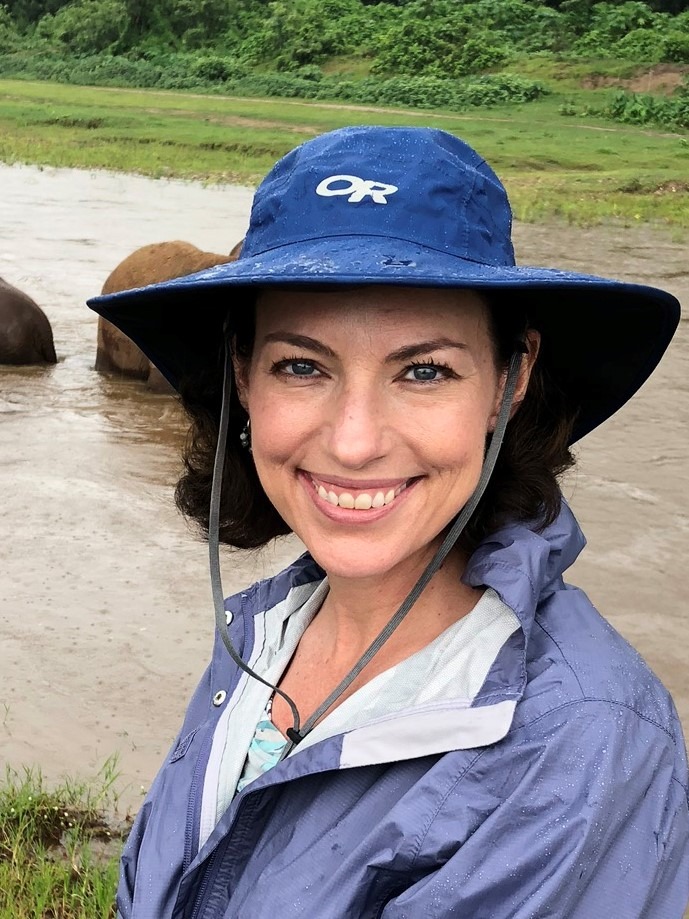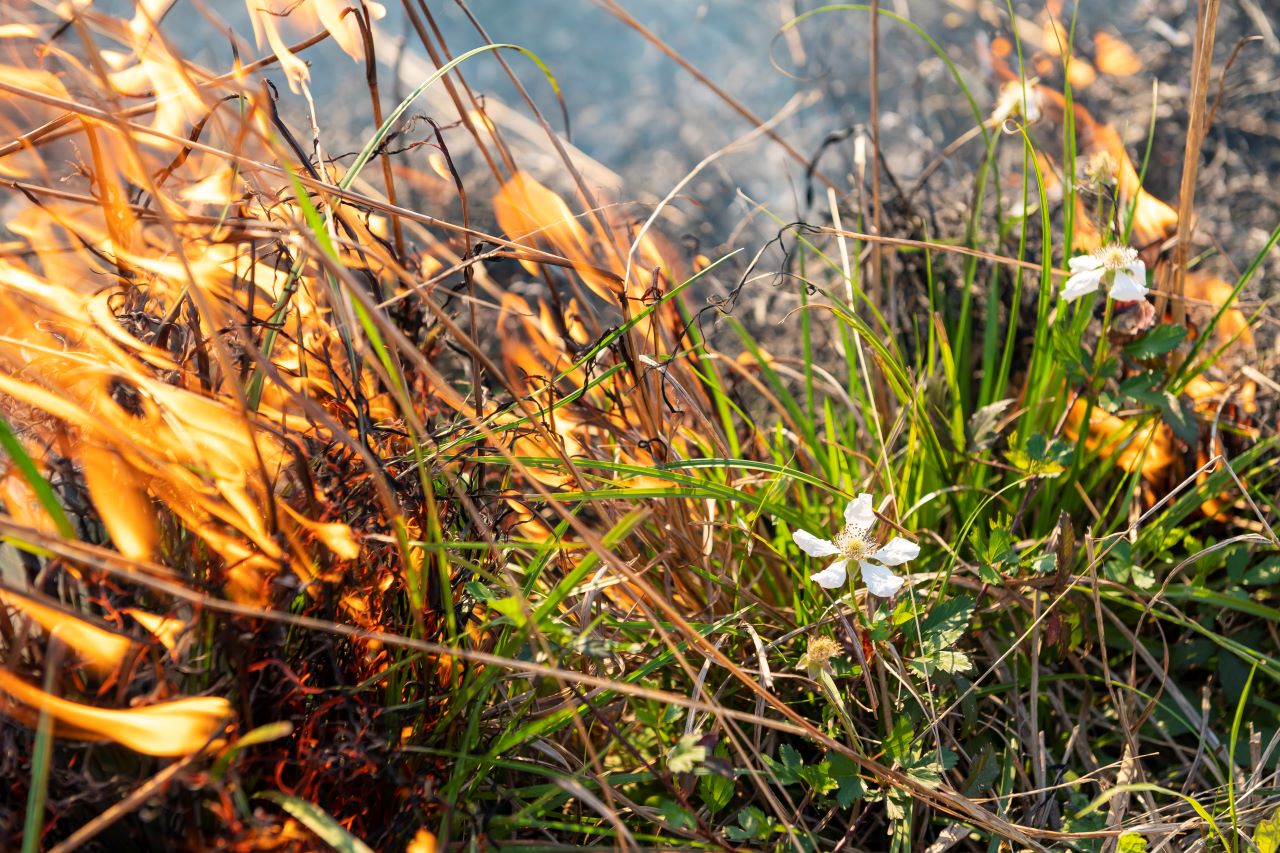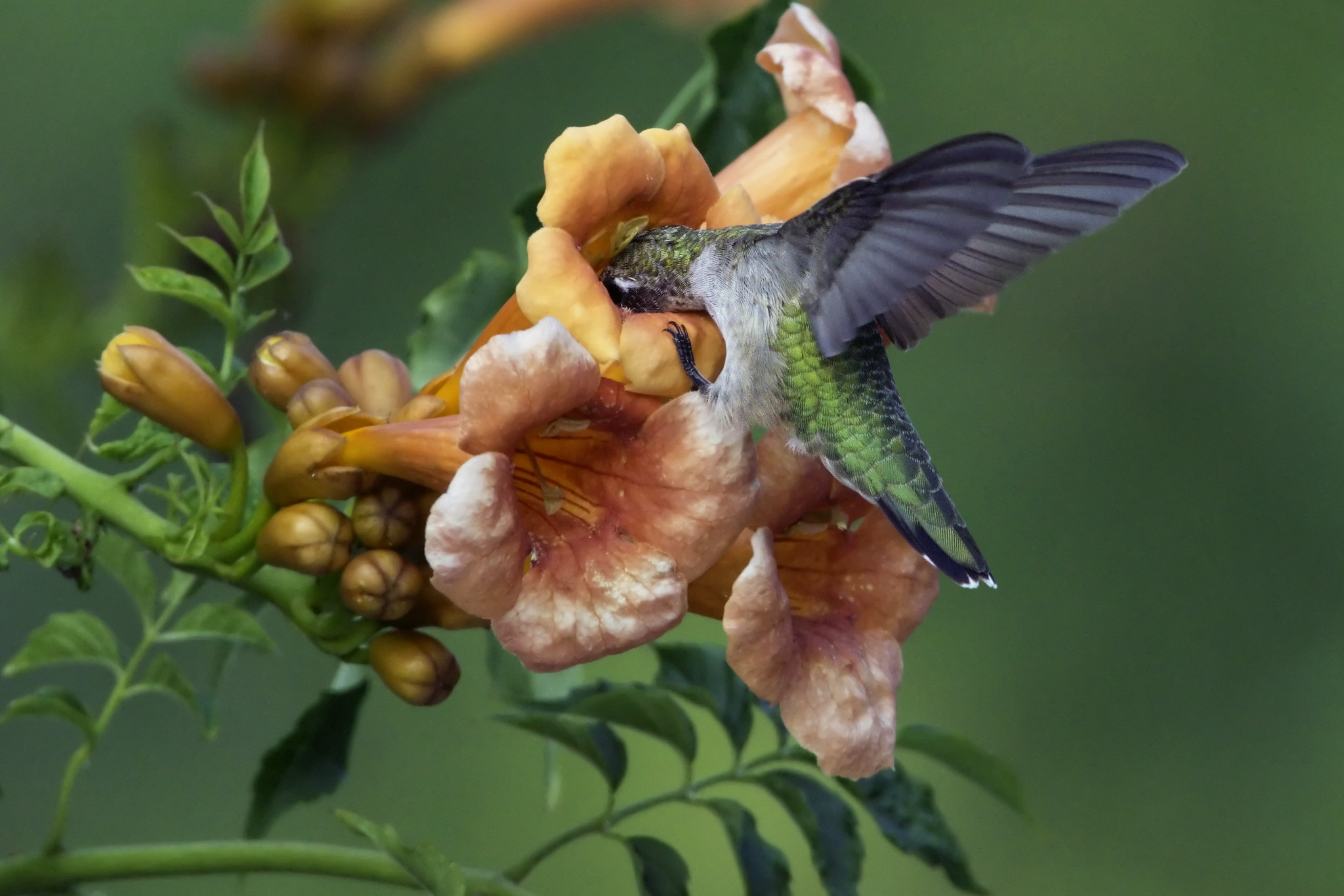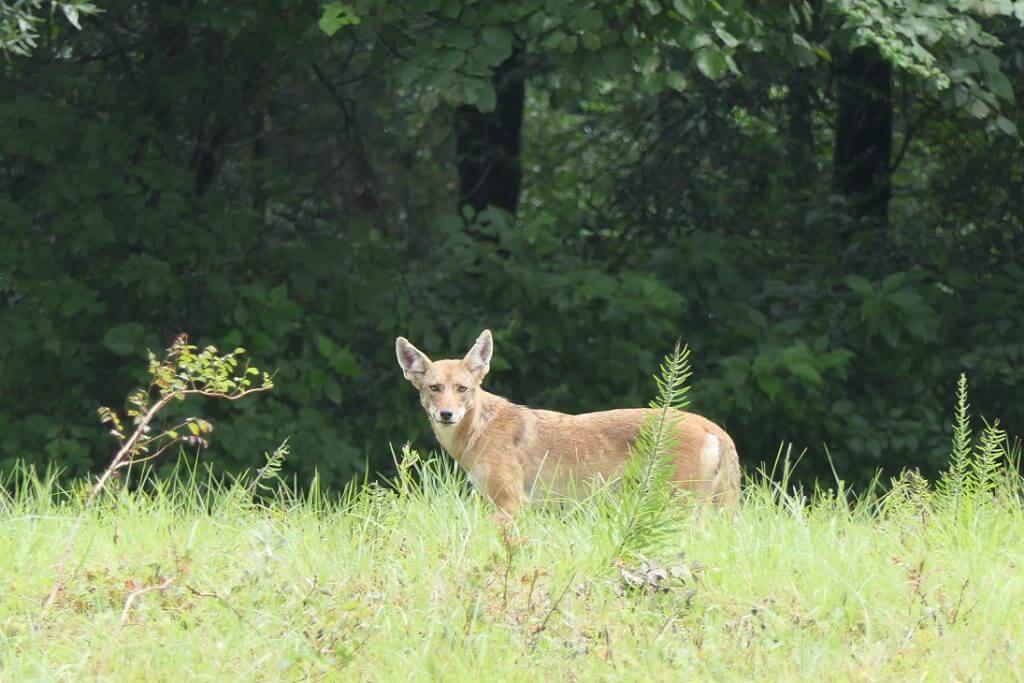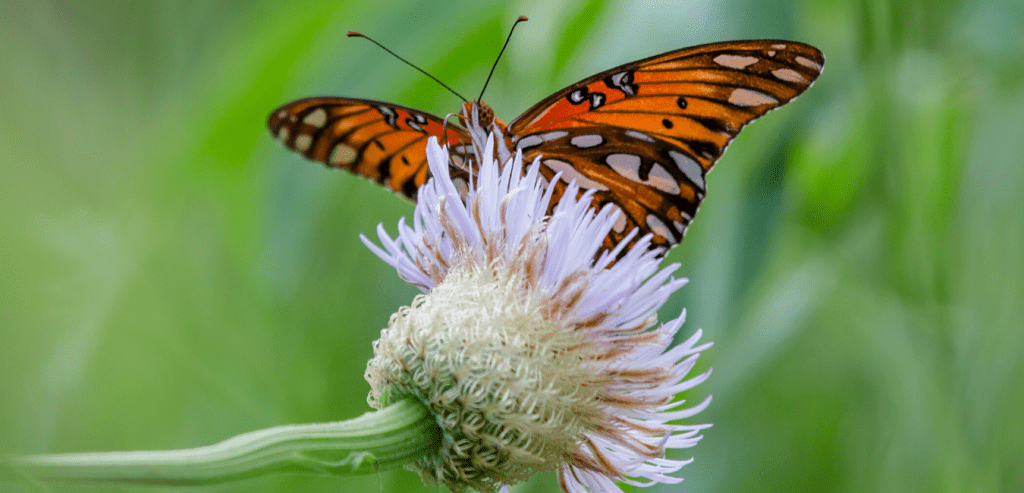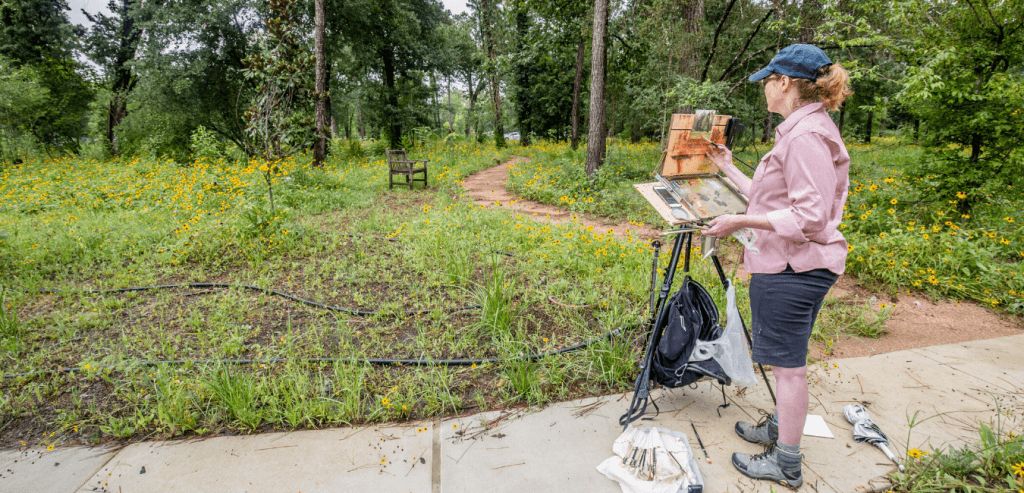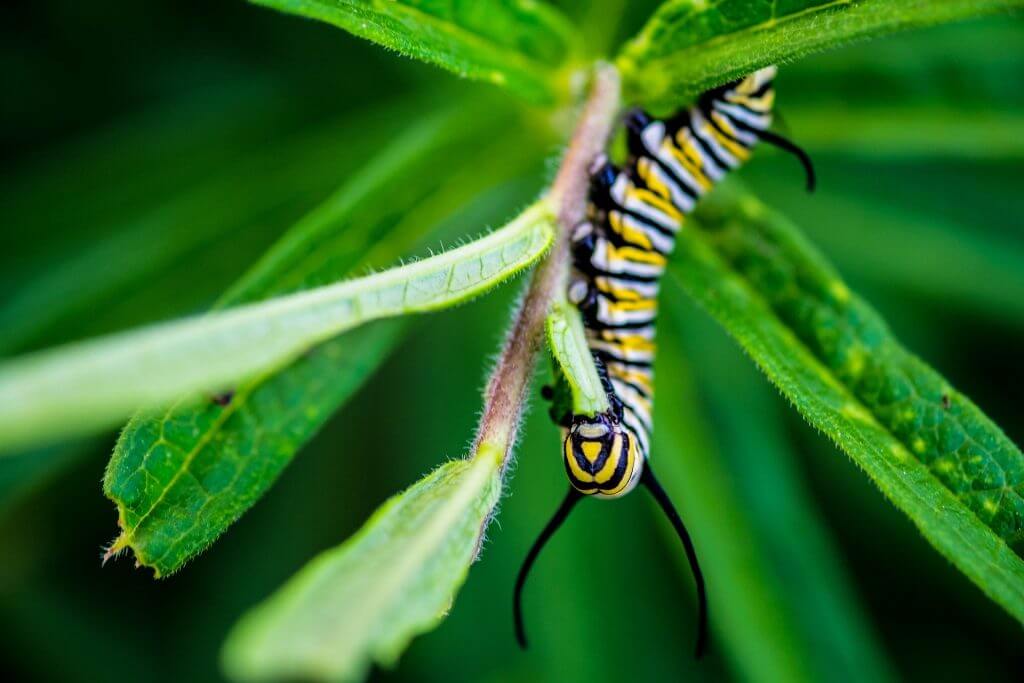Written by Kelsey Low
Fire is spreading in the savanna. Clouds of wood-scented smoke rise up through the trees. A dry patch of brush catches in a sudden rush of flame, bright orange and crackling against the blue sky. Tree stumps smolder and blacken. Ashes drift in the breeze and fall gently to the ground. When the wind turns, it suddenly feels like you’ve put your face in an oven – dry, eye-stinging heat. All according to plan.
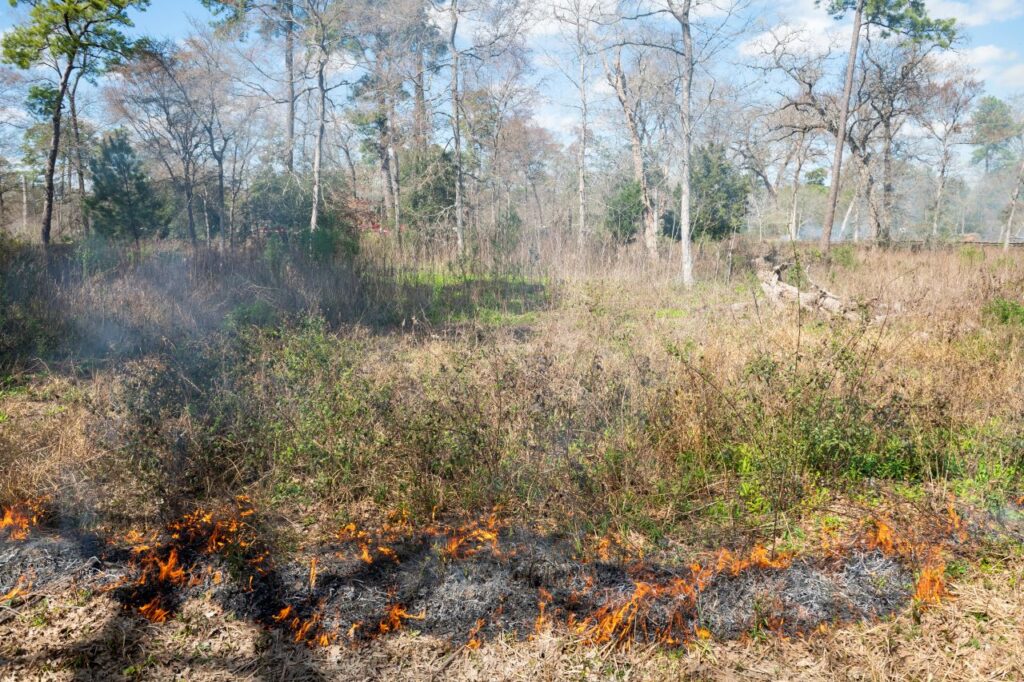
Fire is powerful. Uncontrolled fire can be deadly, but prescribed fire – planned and managed as safely as possible – is vital for ecosystem health. Regular fires keep grasslands thriving by removing woody brush. Fire helps control invasive weeds. Some plant seeds only open in the heat of a flame. Ashes restore nutrients to the soil. Small, quick fires remove debris that would otherwise pile up and fuel dangerous wildfires.
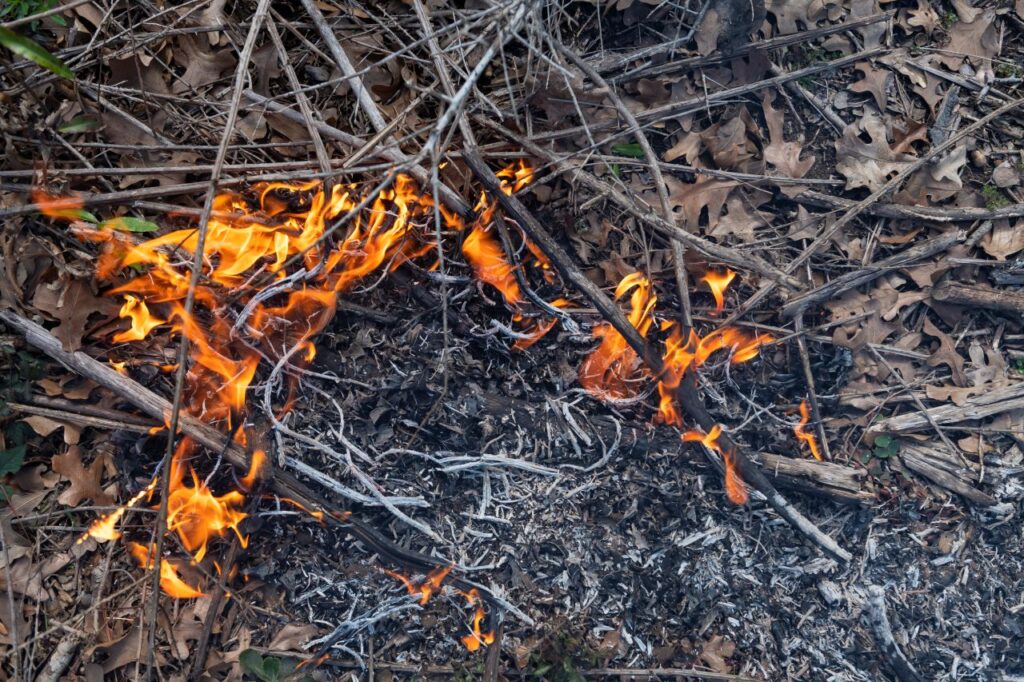
Back in the savanna, a drone whirrs in the sky, recording the fire’s progress. Houston Fire Department firefighters in protective gear patrol the borders of the burn area. One holds a drip torch: a small tank that guides drops of fuel past a lighter, sending a dribble of flaming liquid onto the ground. Another wields a long-handled tool that looks like a cross between an axe and a farmer’s hoe. She uses it to scrape burning embers away from sensitive trees. Some are using a hose to wet down the edges of a boardwalk to keep it from catching fire.
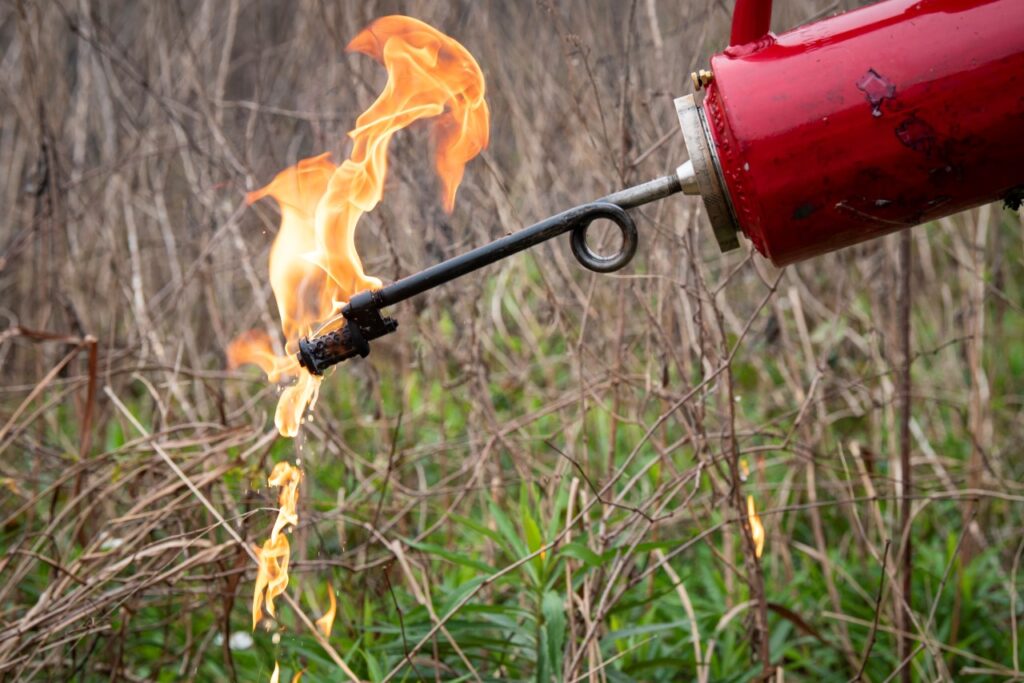
Prescribed fires are planned months in advance. Fire departments, conservation specialists, meteorologists, police, and local officials are just some of the stakeholders involved. They must agree on a date that will have the right weather: not too dry, not too wet, wind at the right speed and direction to keep the fire going but allow the smoke to drift away from people. The Conservation Team creates firebreaks and buffer zones to protect vulnerable plants, wildlife, and structures. The goal is to minimize risk for everyone.

Everyone gasps as a Red-tailed Hawk swoops through the smoke: it’s looking for rodents fleeing the fire. Small insect-eating birds flutter at the edge of the burn area picking up grasshoppers. A racoon dashes out of the brush and shimmies up a tree well above the retreating flames. Turtles slide away from the heat and into the cool water of a nearby pond. The fire is dying down – now there’s just a thin blanket of ash on the ground. Butterflies come down to drink from the mineral-rich soil.

Prescribed fires take a lot of work. Thank you to everyone who made this possible, including Houston Fire Department, Houston Police Department, Arboretum Staff, our amazing volunteers, photographers, and more. All that effort has led to a successful burn and a healthier savanna.
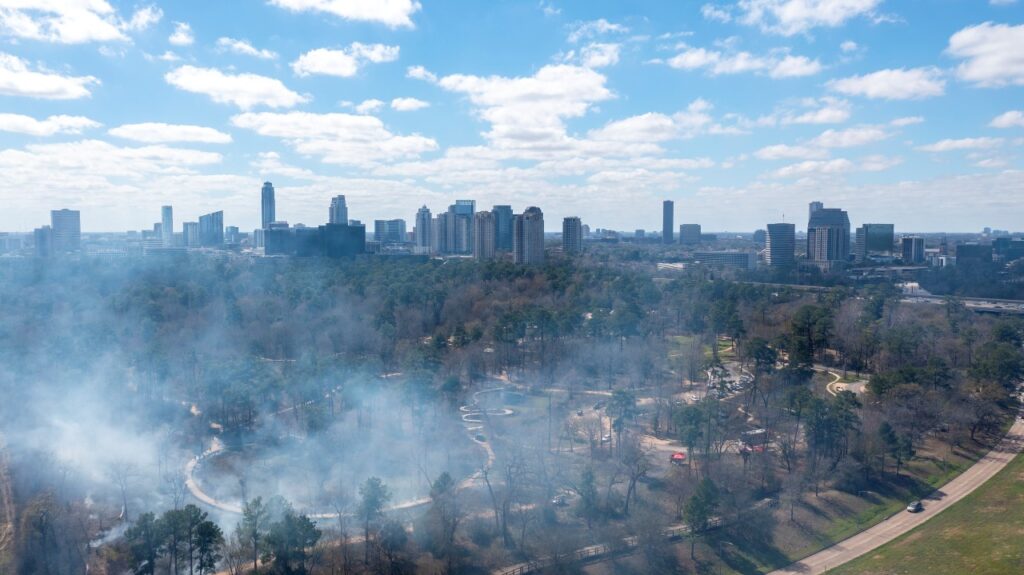
Photo credit: Anthony Rathbun

